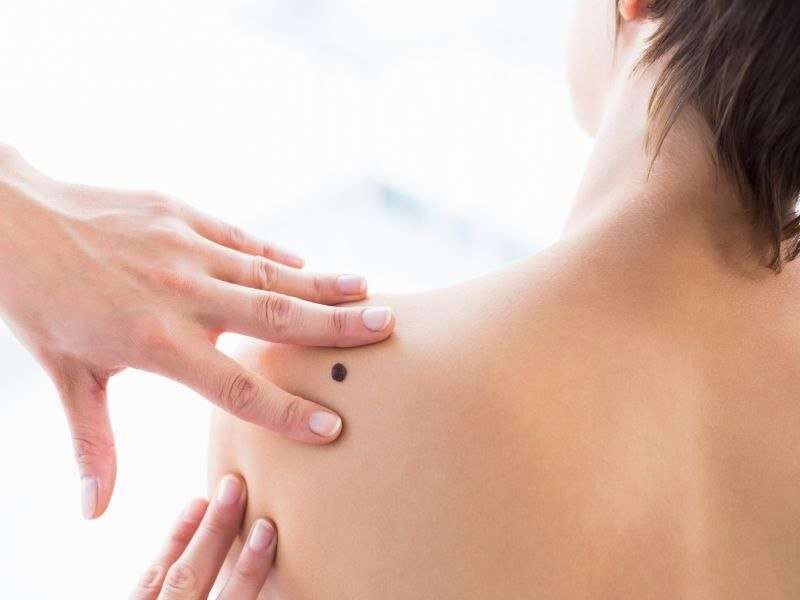How to do a skin cancer body check

(HealthDay)—Every year, about 5 million Americans are treated for skin cancer—an abnormal growth of skin cells that most often develops on areas exposed to the sun.
You can spot early signs by regularly checking your skin for changes.
Everyone is susceptible to skin cancer. However, people who have light skin that burns easily, red hair, and/or blue eyes have a higher risk.
Three types of skin cancer account for nearly all cases: basal cell and squamous cell carcinomas and, the most dangerous, melanoma.
Follow the A-B-C-D-E method to help you know when a growth needs to be evaluated by your doctor.
Here's what to look for when evaluating skin growths:
- Asymmetry: The two halves of the growth don't match.
- Border: The edges are irregular or poorly defined.
- Color: You see various shades of tan, brown, black or even white, red or blue.
- Diameter: Melanomas are often the size of a pencil eraser or smaller.
- Evolving: You spot a growth that's changing in size, shape or color.
To fully examine your body, start by looking straight ahead into a mirror. Check your face and torso. Next, raise your arms to see your right and left sides. Then look at your arms, including underarms, hands and palms. Check the front and back of your legs and feet as well as your soles and between your toes. Use a hand mirror to check the back of your neck.
Finally, examine your scalp, parting your hair as you move across your head.
Be sure to have your doctor give your skin the once-over during your annual wellness exam, and see a dermatologist for any suspicious growths.
More information: The American Academy of Dermatology has a video on how to spot skin cancer, along with other information to help you do self-checks.
Copyright © 2017 HealthDay. All rights reserved.



















